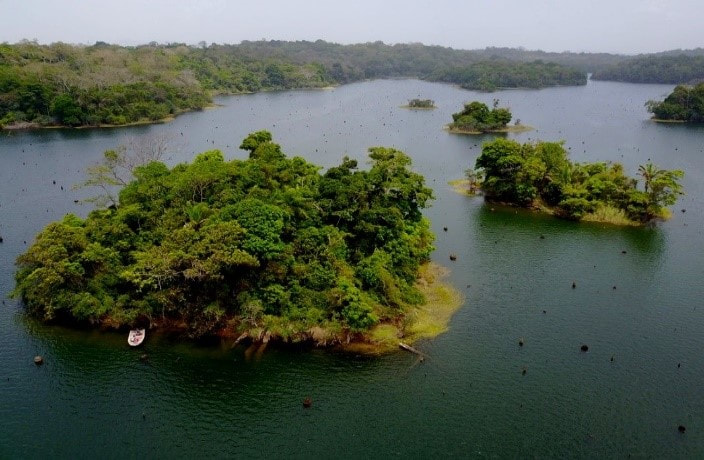Adaptation to the Biophysical Environment
The function of organisms is often exquisitely matched to their environment (Cox and Cox 2015). However, most environments on earth are not static, and so organisms must cope with a dynamic and changing environment. Understanding the biological response to environmental change is particularly crucial, given the rapidly changing climate of Earth. My laboratory studies the potential for evolutionary adaptation or adaptive plasticity in response to rapid environmental change using an experimental island system in Panama. During the construction of the Panama Canal, a large valley system was flooded to create Lake Gatun. There are remnants of hilltops in this valley persist as hundreds of islands. All of the small islands are hotter and drier than the mainland rainforest. We have used these islands as experimental systems to study how tropical lizards (which are predicted to be particularly negatively impacted by climate change) respond to rapid environmental change. Beginning in 2017, we have transplanted over a thousand slender anole lizards to over a dozen islands in Lake Gatun. We have found that rapid environmental change disrupts parasite dynamics (Cox et al. 2020a), impacts colonization success (Nicholson et al. 2022), alters limb morphology and behavior (Nicholson et al. 2023), alters the gut microbiome (Williams et al. 2022), and can increase thermal tolerance and impact the transcriptome expression in multiple tissues (Rosso et al. submitted). This research has been funded by the Division of Environmental Biology, Eovlutionary Processes Cluster at the National Science Foundation.
